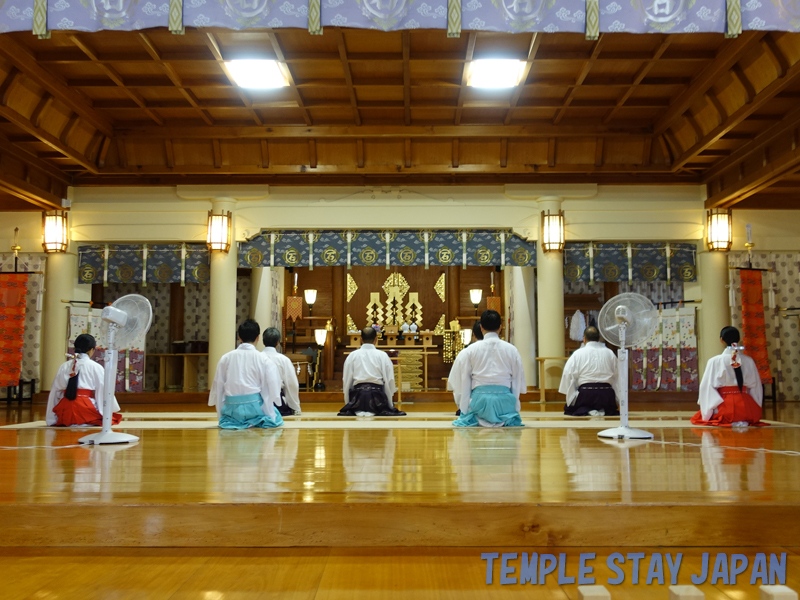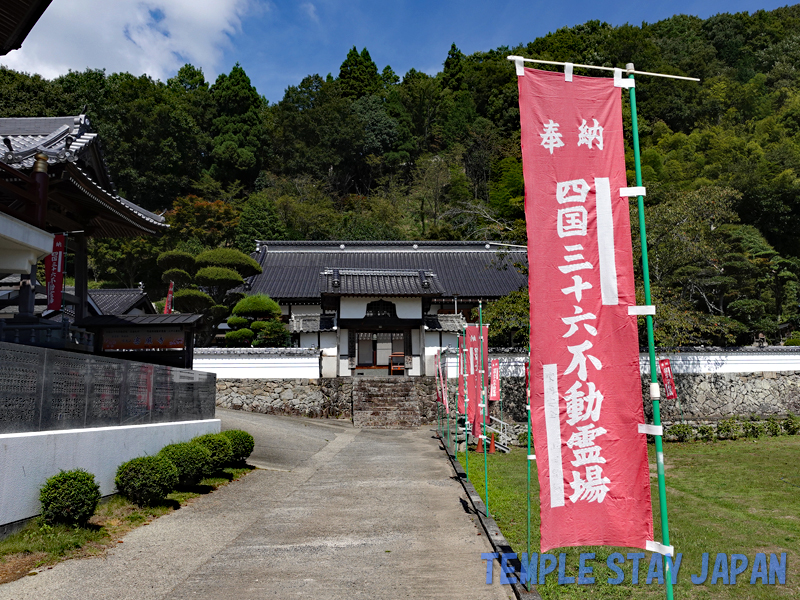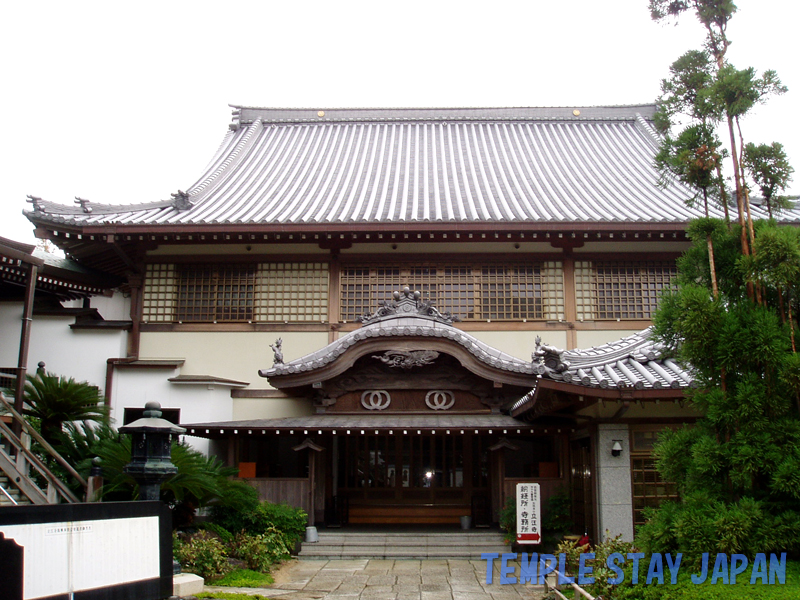Shikoku– category –
-

Syussekiji temple stay (Ehime)
Syussekiji Temple was founded in 718. The main hall is built on the summit of Mount Izushi, which is 812 meters above sea level. There is a shukubo within the temple grounds. You can attend the morning prayer. If you wish to stay overnight, you must make a reservation by phone. -

Ishizuchi-Jinja shrine stay (Ehime)
Ishizuchi-Jinja Shrine is located on Mount Ishizuchi, one of the Seven Sacred Mountains of Japan. We had the experience of copying out Shinto prayers. It is said that by purifying the heart, one can draw closer to KAMI (DIVINE BEING). Morning worship was held at the main hall. At the end, we received a shrine amulet. -

Mitsugonji (Awa-Ikeda Youth Hostel) temple stay (Tokushima)
Mitsugonji Temple is located halfway up the mountain in Awa Ikeda. It was a little difficult to get to without a car. There was a youth hostel building on the left side of the main hall. If you stay here, you can experience goma (fire) prayer and meditation. -

The 19th stage of Pilgrimage, Tatsueji temple stay (Tokushima)
The room was a 4.5 tatami mat Japanese-style room with air conditioning and a TV set. The sizes of the rooms vary. They served shojin vegetarian cuisine for dinner. I hear that the memorial service is usually conducted in the evening. In general, it was a clean, comfortable and friendly shukubo. -

The 20th stage of Pilgrimage, Kakurinji temple stay (Tokushima)
The principal image is “Yaoi-no-Jizo” (a statue of a Jizo hit by an arrow) which is said to have been carved by Kobo-Daishi. It is designated as an important cultural asset in Japan. The shukubo is a reinforced concrete building. -

The 58th stage of Pilgrimage, Senyuji temple stay (Ehime)
They have some private Japanese-style rooms. The puffy futon (duvet) was really comfortable. They conduct morning services as well. They serve shojin vegetarian cuisine, which is really good. Although the building is made from reinforced concrete, it does not give off a cold impression. -

The 23rd stage of Pilgrimage, Yakuoji temple stay (Tokushima)
It is famous as a temple to drive out evil luck. The shukubo is a reinforced concrete building. I was very grateful because they let me use a large room by myself. I ate in the dining room which also served as a restaurant. There was a religious service in the morning in the temple. -

The 61th stage of Pilgrimage, Kouonji temple stay (Ehime)
It offered all the facilities you would expect. Although I was traveling alone, they let me use a large room. The evening service began from 19:00 after dinner. The next morning, I went to worship the principle image in the main hall, which was open from 6:00 in the morning and we were free to get enter. -

The 24th stage of Pilgrimage, Hotsumisakiji temple stay (Tokushima)
There are various treasures displayed in Houmotsu-kan: a stone Nyoirin Kannon (Cintamani-cakra) , sitting Yakushi Nyorai (Bhaisajyaguru) and a statue of standing Gakko Bosatsu (Candraprabha), which are all designated as important cultural assets. There is also a cave where the young Priest Kobo pursued ascetic training. -

The 4th extraordinary stage of Pilgrimage, Sabadaishi temple stay (Tokushima)
The Goma burning prayer held in the morning service was really impressive as I saw it for the first time. The meals were also tasty. I was able to use a private Japanese-style room all to myself. The bath was comfortable, too. I was able to sleep well as it was quiet.




